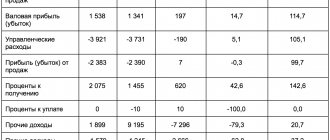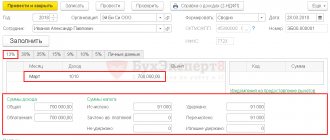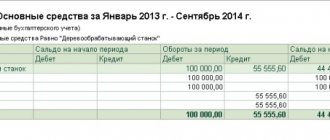Basic Concepts
A defect is a product, work process or its component that does not meet established requirements and standards. A defective product cannot be used for its intended purpose without correction.
Identifying and sending the finished product for revision is the concern of the quality control service, which is the most important component of the organizational structure of enterprises.
Based on the specifics of detection, marriage is divided into two large categories:
- external defect identified by the consumer;
- internal defects identified either by quality control department employees or workshop and warehouse workers.
External defects are more expensive for the enterprise, as they contribute to:
- a decrease in customer loyalty to the manufacturer and its products immediately after purchasing the first defective product;
- the formation of losses not only due to the costs of creating products, but also related costs - transportation, sales, compensation, etc.
Correcting internal defects: what is reflected in debit and credit in postings
Repairing a defect usually involves additional expenses. What is reflected in the debit of account 28 in such situations?
Most often, the costs of correcting a defect are represented by the following costs:
- For additional remuneration for workers correcting defects.
These expenses are recorded by transactions:
- Dt 28 Kt 70 (salaries accrued to employees involved in correcting marriages);
- Dt 28 Kt 69 (contributions accrued).
- Additional raw materials and materials used for finishing: Dt 28 Kt 10.
- Ancillary services of external contractors: Dt 28 Kt 60.
It is possible that an internal corporate investigation will show that the defect was caused by the guilty actions of employees, who then compensate for their shortcomings (optionally, through deductions from their salaries).
As a rule, in such cases the following wiring is used:
- Dt 73 Kt 28 (shows a decrease in expenses for marriage due to compensation for the guilty party);
- Dt 70 Kt 73 (deduction of compensation from the employee’s salary is shown).
If it is preferable for an employee to pay for the marriage not from his salary, but from his own funds, then such payment, if made through the cash register, is recorded by posting: Dt 50 Kt 73.
Subscribe to our newsletter
Yandex.Zen VKontakte Telegram
All costs associated with correcting defects, at the end of the billing period adopted in the accounting policy (usually a month), are written off to the cost of production: Dt 20 Kt 28.
Using account 28 in accounting
Account 28 is active. The formation of a debit account turnover, which includes correction costs incurred during the production of defective goods, occurs within one reporting month. Credit turnover refers to the amount of funds received as reimbursement of expenses from those responsible for defective products (for example, the cost of serviceable spare parts to be returned to production). The balance in this case is final and equal to the sum of all losses - it is written off monthly at the end of the period. Write-off occurs based on the costs of manufacturing similar products or to account 25.
When calculating the costs of losses due to defects, it is necessary to take into account only that part of the costs that is not written off to the culprits or rejected materials. At the same time, the reporting documentation must indicate all business transactions related to the marriage.
Accounting for manufacturing defects is extremely important from a tax point of view, since it is directly related to VAT and NP (income tax): losses resulting from defects reduce the tax base.
Accounting for VAT on defects discovered in production is not without a large number of controversial issues. To avoid troubles with the tax authorities, businesses use VAT recovery.
Defects in production and their accounting
During the manufacturing process, a company may produce defects. A manufacturing defect is considered to be products, goods, semi-finished products, finished products that do not meet the quality, technical specifications (TS) or certain enterprise standards (STP), therefore, the products cannot be used for their intended purpose.
Manufacturing defects can be divided into two types:
- Depending on the nature of the detected defects:
- Correctable defects are defective products, the correction of which is economically feasible and technically possible, after which they can be used for their intended purpose;
- An irreparable defect is a defective product that cannot be corrected, since correction is not economically feasible, since in this case it cannot be used for its intended purpose.
- At the location where the defects were found:
- An internal defect is a manufacturing defect discovered at the enterprise;
- External defect is a manufacturing defect discovered after sale during operation by the buyer:
To account for defective products, the technical control department (QCD) creates a document that reflects the fact that a defect was detected and what type it belongs to. The document is generated in any form, taking into account paragraph 2 of Article 9 of Law No. 129-FZ of November 21, 1996.
It is important to note that accounting for manufacturing defects is also necessary for tax accounting.
Losses due to manufacturing defects are recognized as costs that reduce the taxable income tax base. When calculating the costs of manufacturing defects, you need to take into account only those costs that were not written off for materials or for the employee who caused the defect.
In the event of an external defect, the company reduces the amount of VAT that was accrued and paid earlier by the amount of VAT on the sale of returned products.
Subaccounts and analytics
Maintaining a 28th account is advisable in enterprises specializing in mass production of various products. At the same time, all subaccounts used in analytics must be specified in an individual accounting policy.
Analytical accounting for account 28 makes it possible to collect information about the defect and the persons responsible for its occurrence. This approach allows us to improve production processes, increase their efficiency and track the sources of defects.
Why is count 28 needed?
On account 28 - Defects in production - transactions are taken into account that reflect the fact that the company incurs expenses associated with the discovery of defects (and the business entity performs certain actions in response to such detection).
A defect is usually understood as a production result (finished product) that does not meet the regulatory criteria established by the enterprise (including taking into account the standards prescribed by law). Marriage can be:
- Internal, that is, identified at the enterprise even before the finished product is released to the buyer.
Defective products in this scenario can be:
- fixed;
- written off as not subject to correction.
- External, that is, identified by the buyer (during acceptance or during operation).
As a rule, defective products must be returned to the supplier for correction (under warranty or other conditions).
Let's consider how the most common transactions with defects - correction, write-off (internal defects) or return to the supplier for correction (external defects) - are reflected in accounting and what entries in account 28 are used in this case.
You can find more complete information on the topic in ConsultantPlus. Free trial access to the system for 2 days.
Correctable and irreparable marriage
- A fixable marriage . If it is possible to correct the defect, then the debit of account 28 collects funds for correction. A certain amount of these expenses is written off from the credit of account 28 to the cost of production to the debit of account 20 “Main production”.
- An irreparable marriage. In this case, a certain amount of money is withheld from the employee who released the defective product. Returnable waste also appears, which goes to the warehouse for further use.
Document flow for defective goods
In order to be able to take into account the expenses incurred in the future, as well as for the purpose of internal control, defective products must be documented. Primary documents must be drawn up regardless of the type of low-quality products produced. This confirms the manufacture of a low-quality product - correctable or irreparable.
In some cases, defects occur when receiving low-quality raw materials from suppliers. A report on defects detected during the acceptance of goods will help to file a claim against the counterparty.
The unified form of the document recording the presence of products of inadequate quality is recognized as the requirement - invoice in form No. M-11. The document is used to record the movement of defective products within the enterprise. Drawed up by the financially responsible person of the unit no later than 1–2 days from the moment the defect is discovered. Transferred to the accounting department for further accounting.
Organizations have the right to independently develop acts of accounting for products of inadequate quality, which will contain the following data:
- name and nomenclature number of the product;
- characteristics of marriage;
- type of marriage;
- number of defective products;
- perpetrators;
- cost of defective products, possible correction costs;
- amounts to be recovered from the guilty persons.
Example of using count 28
At a plant producing various metal parts, the quality control service identified a defective product, which a specialist characterized as an irreparable defect. The acceptance committee conducted an inspection and determined that the defect arose through the fault of the employee. The following calculation was made:
- the cost of creating a part, including costs for casting, wages, experimental work and experimental work, amounted to 50 thousand rubles;
- It is possible to sell a defective part for scrap and receive 12 thousand rubles;
- 10 thousand rubles were collected from an employee of the enterprise;
- Uncompensated damage amounted to 28 thousand rubles.
Typical accounting entries
For a serviceable defect, typical accounting entries for item 28 look as follows:
1) Dt 28
Kt 10, 70, 69, 25 and 26 – write-off of material costs to correct the defect;
2) Dt 73.02 and 28 – recovery of the amount from the culprit;
3) Dt 20, 23
Kt 28 - expenses incurred in connection with correcting the deficiency are taken into account in the cost of production.
If we are talking about an irreparable defect, then in this situation the typical wiring will be as follows:
1) Dt 28
Kt 20 – write-off of the cost of defective products;
2) Dt 41 or 21
Kt 28 – acceptance of defective products into finished product registration;
3) Dt 73.02, 76.05 or 60
Kt 28 – the amount that was recovered from the culprit for the production of defective products;
4) Dt 20, 23
Kt 28 – losses from low-quality products written off to the cost of production.
Typical transactions for account 70
— in correspondence with account 84 “Retained earnings (uncovered loss).”
The basis for the posting is: a statement of accounting for semi-finished products, a statement of consolidated cost accounting, etc. Debit 20 – Credit 25 – the share of overhead costs is included in the costs of main production.
The debit of account 70 “Settlements with personnel for wages” reflects the paid amounts of wages, bonuses, benefits, pensions, etc., income from participation in the capital of the organization, as well as the amount of accrued taxes, payments under executive documents and other deductions. Amounts accrued but not paid on time (due to the failure of recipients to appear) are reflected in the debit of account 70 “Settlements with personnel for wages” and the credit of account 76 “Settlements with various debtors and creditors” (sub-account “Settlements for deposited amounts”). .
Analytical accounting for account 70 “Settlements with personnel for wages” is maintained for each employee of the organization. Contents of the business transaction Debit Credit Salaries were paid from the organization's cash register 70 50 Salaries were transferred from the current account 70 51 From a foreign currency account







